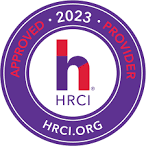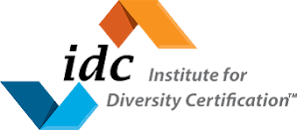Welcome to the topic ” What is Human Resource Management”.
The process of Human Resource Management includes recruiting, selecting, orientation, training, and development of employees, performance and appraisals of employees, determining compensation and providing various benefits, employee motivation, maintaining and developing healthy relations with employees and unions, employee safety, and to ensure that employee welfare and health measures are in compliant with local and national labor laws.
Human Resource Management also manages the management functions of an organization such as planning, organizing, and controlling:
- It handles procurement of human resources in an organization, employee training & development, and maintenance of human resources.
- It also helps to achieve business and social objectives.
Human Resource Management is a vast subject and multidisciplinary subject.
- It includes the deep study of psychology, communication, finances, and sociology.
- It also helps to build team spirit and promote teamwork in an organization.
- Lastly, HRM is a continuous process.
What is the importance of Human Resources Management?
We all know that behind the production of anything, there must be a human mind. Man hours (working hours) and effort are also necessary resources for any task to get done, but people might not realize how important these three things actually are.
So, humans are necessary for any organization. That’s why every organization wants to acquire skilled and competent individuals to make their business competent and best.
As you know that Management has five “M’s” that are men, money, machines, materials, and methods. As for the HRM, it deals and manages the first M, which is “MEN.” Furthermore, among those five “M’s,” the first M is the most challenging to manage. This is because every man is from different background and different from others. Besides, the men have the power to manipulate the other Ms. Whereas, the other four “M’s” are either unresponsive or abstract, and they cannot think.
Objectives of Human Resource Management:
Social objective: Organizations are socially responsible for society’s needs and challenges. If they fail, restrictions may arise that would limit human resource decisions and may limit organizations’ ability to utilize their resources effectively towards social welfare.
Organizational objective: HRM also contributes to the overall organizational effectiveness. HRM is the continuous process that helps the organization and businesses to achieve their primary goal and objectives.
Operational objective: Maintaining the organization’s work and functions at all levels is one of the organization’s needs. Businesses need to ensure that resources are not being wasted. That’s why every department’s service levels should remain in line with the company it serves.

Why is Human Resource Management vital for Managers?
Why are Human Resource Management concepts and techniques vital for all managers? Probably it’s simple to answer this question by showing you some of the common and costly mistakes that you don’t want to make during the process. Here are some of them:
- Appoint the wrong individual for the job.
- Experience high turnover.
- Your workforce might not work at their best.
- Waste time with impractical talks and interviews.
- Have your business taken to court due to any discriminatory actions.
- Commit any biased labor practices.
Principles of Human Resource Management:
Modern human resource management is based on various predominant principles.
The core Human Resource Management principle is realizing that human resources are the most prized and valuable assets of any business. By effectively managing human resources, a business can reach new heights.
Another essential principle of HRM states that business success will be achieved if an organization’s personnel policies and practices are connected with the achievement of business objectives and strategic plans.
The third important HRM principle states that HR’s primary responsibility is to discover, secure, and guide employees whose needs and talents are suitable for the functional needs and business goals.
Other HRM principles include developing an organizational culture within the organization to ensure proper performance measurements.
As per Armstrong, “HRM is a strategic approach to acquire, motivate, develop, and manage the human resources in an organization. It is dedicated to developing or building an appropriate corporate culture within an organization and introducing training that reflects and supports the business core values and ensures success.
One of the most critical aspects of running a successful business is human resource management. In order to be competitive, hire efficient HR managers and develop an appropriate department for handling all your employees’ concerns properly.
This is extremely vital for big organizations. The overall success of a business mainly relies on the people who work for it. If you want to enjoy long-term growth and prosperity, then make sure that your employees’ needs are being met by providing them with basic HR skills like training programs or seminars.
In case small businesses owners don’t have a clear understanding of human resource management basics, they can get from books such as Essentials Of Human Resources Management Ninth Edition (Routledge), which is very helpful because everything is explained clearly, and readers can understand it easily without any confusion.
Are Personnel Management and Human Resource Management Same?
No, both are different, and below are some differences between Personnel Management and Human Resource Management:
The part of management that manages the employees within the enterprise is called Personnel Management. On the other hand, HRM is a branch of management that emphasizes the best use of manpower.
Personnel Management treats employees as tools or devices, whereas workers are classified as assets in Human Resource Management.
HRM is the advanced variant of Personnel Management.
In personal management decision-making process is slow, but it is quick in Human Resource Management.
In Personnel Management, initiatives are distributed as piecemeal. However, initiative distribution is integrated into Human Resource Management.
In Personnel Management, the job design or role is the division of tasks whereas, in the HRM, employees are classified into groups for any task.
In Personal Management, the negotiations rely on collective bargaining either from the employee leaders or with the union leader. On the other hand, in HRM, there is no collective bargaining, and every employee has an individual contract.
In simple words, Personnel management keeps the focus on ordinary activities, like hiring, rewards, training, and harmony. While, human resource management emphasizes treating employees as prized assets, which organizations need to value, use and preserve.
Have any questions regarding the topic “What is Human Resource Management”? feel free to comment below.
Also Read: What Are Diversity And Inclusion?







1 thought on “What is Human Resource Management? – HRM Functions – Objectives”
Pingback: Hybrid Work: All You Need To Know: - HR Opportunity- The HR Company